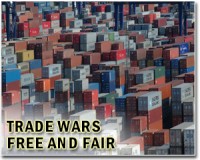 |
Las Vegas (AFP) May 17, 2011 China, India and Brazil are poised to fuel an explosion in international tourism in the coming years, showering money and jobs on countries ready for it, and trouble for those that aren't, industry leaders say. With an estimated two billion new middle class consumers expected to come into the markets from those emerging powerhouses over the next two decades, the travel industry sees a potential gold rush ahead. "The growth of China outbound travel is moving at a huge pace -- it is about 20 percent increase every year. And the number of outbound Chinese travelers hit 58 million last year," said David Scowsill, CEO of the World Travel and Tourism Council, an industry promotion group. "And if you look ahead, (with about) 1.6 billion coming out of China and India, they are a huge amount of people coming in with money to burn," he told reporters. The impact of that coming wave is a top topic at a three-day global travel and tourism summit that opens here Tuesday, drawing CEOs from many of the world's largest travel companies and top tourism officials. The United States is sending Homeland Security Secretary Janet Napolitano, Transportation Secretary Ray LaHood and Valerie Jarret, a top advisor to President Barack Obama. Mexico's President Fernando Calderon is the guest of honor. Barriers to travel, technological innovation and change, body blows to tourism in quake-struck Japan and the turbulent Middle East also are on the agenda here. But organizers say they want to get government officials and industry leaders thinking about what the arrival of the Chinese, Brazilians, Indians and others from newly affluent countries will mean for their national economies and the international travel business. "We'll ask the attendees whether they are ready to absorb that level of growth," said Scowsill. "Are governments ready with infrastructure build? Are private investors ready to put the investment in, and generally speaking are we ready to absorb that level of growth?" Roger Dow, of the US Travel Association, calls the conflict between the projected surge in demand and lagging infrastructure "a real chicken and egg." "As we build this travel, which will happen, we'll also have to take a real hard look at our infrastructure, our next generation systems for airports, and adding airport capacity," he said. Countries that haven't caught up in time are likely to be cursed with fun-killing bottlenecks and overcrowding as millions of new tourists pour through the global travel system. Ironically, said Scowsill, it is "the developed market leaders that don't fully understand the impact of tourism. They kind of take it for granted in a way that we do not see in some of the developing world." The United States, for instance, has seen little growth over the past decade in the number of long-haul travelers it receives, at a time when the rest of the world has seen an increase of about 40 percent. "Had we kept pace it would have been another 78 million visitors to the US. It would have been another 600 billion dollars to our economy, and almost 470,000 jobs," said Dow. A major culprit, according to Dow, is a system for granting visas that is so gratingly slow that it is driving away visitors. After the September 11, 2001 attacks, the United States instituted requirements that every visa applicant be interviewed in person by a consular level officer. "The end result is we have seen visa wait times for interviews go up to 100, 120 days in Brazil and China," he said. "In Brazil, there are only four places you can go for a visa interview. In China there are five. So the combination of the huge population, the huge demand, and the need for face-to-face interviews in very few places is what has created the problem," he said. The USTA released a report last week calling for an overhaul of the system. It proposed hiring 400 more consular interviewers, allowing interviews to be done by videoconference, and exploring visa waivers with Brazil, India and China. "The Brazilian economy is soaring and people want to spend money, they want to travel. And the two highest groups that spend money are the Chinese and the Brazilian travelers. They outpace other travelers in the world by 25 to 50 percent per person," said Dow. How much political support there will be in Washington is unclear, however, with suddenly deficit conscious lawmakers in competition to make make painful budget cuts.
Share This Article With Planet Earth
Related Links Global Trade News
 China's April foreign direct investment up 15.2%
China's April foreign direct investment up 15.2%Beijing (AFP) May 17, 2011 The value of foreign direct investment in China rose 15.2 percent in April year-on-year to $8.46 billion but fell from the previous month, the commerce ministry said Tuesday. April FDI was down from $12.52 billion in March, when it rose 32.9 percent on-year, the ministry said in a statement. Ministry spokesman Yao Jian did not explain why FDI had dropped in April from the previous month. ... read more |
|
| The content herein, unless otherwise known to be public domain, are Copyright 1995-2010 - SpaceDaily. AFP and UPI Wire Stories are copyright Agence France-Presse and United Press International. ESA Portal Reports are copyright European Space Agency. All NASA sourced material is public domain. Additional copyrights may apply in whole or part to other bona fide parties. Advertising does not imply endorsement,agreement or approval of any opinions, statements or information provided by SpaceDaily on any Web page published or hosted by SpaceDaily. Privacy Statement |